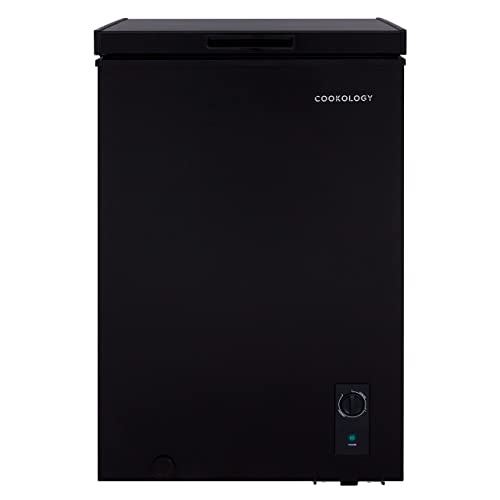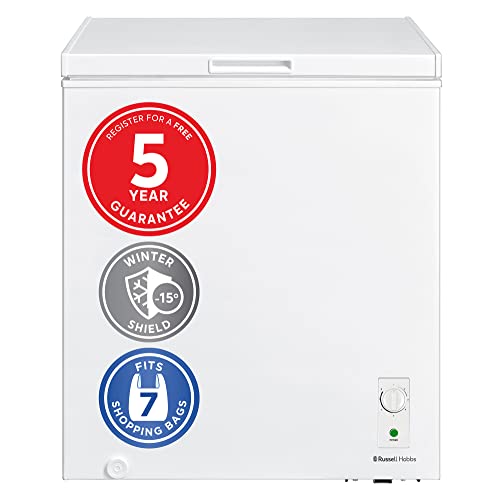The 10 Most Infuriating Fridge Larder Failures Of All Time Could've Be…
페이지 정보
작성자 Dwain Bustamant… 작성일 24-01-28 21:34 조회 15 댓글 0본문
 Tips For Organizing Your Fridge Larder
Tips For Organizing Your Fridge LarderA fridge larder is an excellent method to store produce that's over its prime. It also helps you manage a smaller refrigerator and help you save money on your energy bill!
It's a handy space to store items such as eggs, bread, and hard cheeses. Fresh herbs also benefit from a low moisture.
Keep It Organized
A fridge's larder helps cut down on food waste and helps you find items while cooking. But, just like any other space in your home, the fridge can become messy and chaotic. Here are some tips to ensure that your refrigerator runs smoothly and neatly.
Take Inventory
The most important part of organizing your fridge is taking inventory, says Holly Blakey, a professional organizer at Breathing Room. "Take everything out, check expiration dates, and wash the surfaces." Throw away expired food and leftovers, or throw them away or freeze them and throw away any food items that aren't eaten before it gets rotten.
Blakey suggests that you place the most frequently used items on the front of your fridge. Then, put those items that aren't often used in the bottom and the back of your refrigerator.
Organize Your Freezer
If you own a chest freezer, you can organize it using clear storage bins that will allow you to find foods more easily. Label each bin clearly and group items that are similar together. For instance, you could put a bin in the pantry to store condiments, another for sodas, and another for cheese sticks. You can also use a lazy Susan for condiments and other frequently used items to keep them from getting lost in the back.
 Store food items that require coldest temperatures at the rear of a side-by-side refrigerator and other items that require warmer temperatures towards the front. The lower shelf is ideal for yogurt, milk cream, butter and cream (it will not melt). And the crisper drawers are best for storing spillage of produce.
Store food items that require coldest temperatures at the rear of a side-by-side refrigerator and other items that require warmer temperatures towards the front. The lower shelf is ideal for yogurt, milk cream, butter and cream (it will not melt). And the crisper drawers are best for storing spillage of produce.Drawer dividers are an affordable and easy way to make your refrigerator more functional. They'll keep your fruits and vegetables from rolling around, preventing them from rotting before you use them. In addition, they'll make sure your drawers stay clean and organized. To extend the time of tender herbs keep them in water. (Mason jars that have one inch of water work great.) You can also buy an herb preserver to keep in your refrigerator.
Make sure it is visible
Keep your fridge well organized to make it easier to choose healthy food choices and feel satisfied throughout the day. Make sure that all of your containers for food are clear so that you can see the contents. This will inform you of the remaining days on your expiration date and ensure that you don't store food that's past its prime.
Start by giving your fridge's larder a thorough clean. Scrub the drawers, shelves and racks using warm water and dish detergent. Give your fridge an excellent clean to rid of any gross spills and crumbs that might have accumulated over time.
Restock your fridge once everything is clean and dry. Start with the cheese and deli drawer -- that's the place to store your cheeses, deli meats, leftovers and dairy items. Then, move to the produce drawer. This is where you should keep the leafy greens as they can wilt easily. Keep it at least three-quarters full to ensure freshness.
The pantry drawers in certain refrigerators can be helpful for storage of party trays, large bags of frozen vegetables, and other food items that are bulky. This drawer can be used to store condiments like ketchup and mustard, as well as nut-butters and other canned goods. Do not store any milk in this area however, as it may be spoiled quickly due to the fluctuating temperatures inside the refrigerator door.
The back of your refrigerator should be reserved for salad dressings, condiments and other jarred items that can last an extended period of time. Use a riser on containers to make them easier to read. This will prevent you from opening and closing the lids a few times.
When you fill every bin, make it a point to label it with a marker or stickers that are easy to read. This will make it easier for your family to identify the contents of each container, and for you to find the items you require. Adding some labeled bins can also be a great method to organize your fridge and decrease the amount of waste that you create.
Keep Cool
A good fridge larder keeps food at a proper temperature, preventing spoilage and slowing bacterial growth. Larders can be installed into cabinets that are already in place or can stand alone. They are typically located on the north-facing side of the home to minimize the sun's exposure. They may also have additional insulation or ventilation to prevent heat from getting into the food storage area. They typically also have thicker walls and less windows to keep the inside at the lower temperature than other parts of the house.
A larder should have a drawer for meat and one for vegetables, each with a specific setting that can be programmed to the proper temperature. This will ensure that the chicken and burgers are cooked to perfection, however the salad greens will not be too damaged. You can also set the drawer in the larder to low humidity for fruits or vegetables that release a lot of moisture such as cucumbers or tomatoes.
To preserve cheese, you can keep it in different drawers in the fridge. Wrapped in paper, greaseproof or Clingfilm or greaseproof film, you can keep it fresher for longer. Other items that can be kept in the refrigerator's doors include drinks, condiments that are not perishable (like ketchup) eggs, water, and other liquids. The fridge door is not the best place to store milk because it is warmer and less stable than other drawers.
To give your home a more organized appearance, you can organize small containers to make them more easily visible. This is beneficial for family members who are on the move and require food. Labeling bins or shelves to indicate which foods are best eaten first is a good idea, particularly in the event that your family members do not know how to read labels!
A larder is also a great place to keep leftovers. You can keep them in a variety of plastic and glass containers that are safe for food preparation. They are great to store smaller portions of ingredients. Preparing these for quick meals is a sure way to save time and money when shopping. And if you have a neat, tidy fridge with a dedicated space for storing the items, it will be much easier to stay on top of your food budget!
Keep it Fresh
The best ways to organize your fridge reduce food waste and help your healthy food items last longer. A few smart strategies will keep your fresh food at the correct temperature and allow you to check what's in your fridge.
Crisper drawers are included in most refrigerators. They alter the flow of air and increase humidity, which can extend the lifespan of fruits and vegetables. However, it is important to use them properly. Mixing greens and fruit can cause the latter, like the greens, to wilt or spoil prematurely because of the ethylene that is produced. It is also essential to separate the different types of produce and keep them in the proper drawers.
The door shelves are the most warm part of the fridge. They are best used for items that don't require special cold or conditions of storage like jars of salad dressings jams, chutneys, jams and drinks with a long shelf life (anything bought in bulk and having the same expiration date). The top shelf is ideal for drinks that can be stored upright and without leaking, including milk and water.
It isn't easy keeping refrigerator drawers tidy, with things rolling and jumbling together. But there are some simple ways to assist. First, you should invest in a set of refrigerator drawer dividers that keep the food items separate and prevent them from squishing against each other. The ability to organize by size is useful. Keep produce of similar heights on the same shelf, and don't keep things that aren't of the same height adjacent to one another -- raw meat shouldn't be stored in the same drawer with cooked ham!
A thermometer should be in your fridge. It's a low-cost, simple-to-use device that will ensure that the refrigerator is at the ideal temperature so your food stays at its safest and freshest.
Don't forget to keep a supply of plastic grocery bags in your fridge freezer deals for storing items that don't have their own container. The moisture trapped inside the bag helps keep vegetables from rotting too quickly. For herbs that typically wilt in days, you can keep them fresher longer by washing them and placing them in a glass of water. This is just as effective as a plastic sack in keeping moisture.
- 이전글 How To Find The Right Belt Conveyor Or Conveyor Belt In 3 Easy Steps
- 다음글 30 Inspirational Quotes About Amazing Thai Women Bangkok In Thailand
댓글목록 0
등록된 댓글이 없습니다.